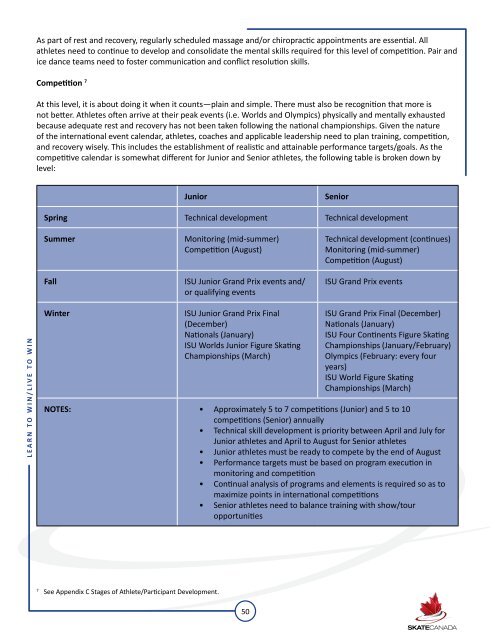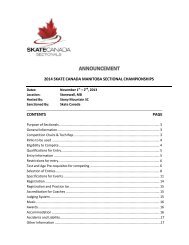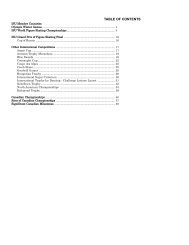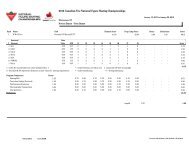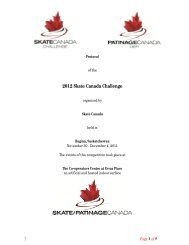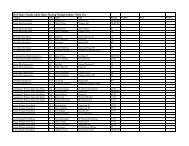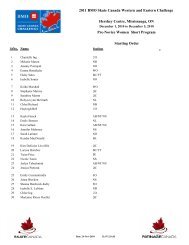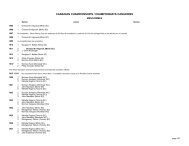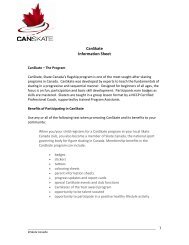LONG-TERM ATHLETE DEVELOPMENT - Skate Canada
LONG-TERM ATHLETE DEVELOPMENT - Skate Canada
LONG-TERM ATHLETE DEVELOPMENT - Skate Canada
You also want an ePaper? Increase the reach of your titles
YUMPU automatically turns print PDFs into web optimized ePapers that Google loves.
L E A R N T O W I N / L I V E T O W I N<br />
As part of rest and recovery, regularly scheduled massage and/or chiropractic appointments are essential. All<br />
athletes need to continue to develop and consolidate the mental skills required for this level of competition. Pair and<br />
ice dance teams need to foster communication and conflict resolution skills. 865 Sheord Road, Ottawa, Ontario K1J 1H9<br />
Competition 7<br />
Phone 613.747.1007 I Toll Free 1.888.747.2372 I Fax 613.748.5718 I Toll Free Fax 1.877.211.2372<br />
At this level, it is about doing it when it counts—plain and simple. There must also be recognition that more is<br />
not better. Athletes often arrive at their peak events (i.e. Worlds and Olympics) physically and mentally exhausted<br />
because adequate rest and recovery has not been taken following the national championships. Given the nature<br />
of the international event calendar, athletes, coaches and applicable leadership need to plan training, competition,<br />
and recovery wisely. This includes the establishment of realistic and attainable performance targets/goals. As the<br />
competitive calendar is somewhat different for Junior and Senior athletes, the following table is broken down by<br />
level:<br />
Junior Senior<br />
Spring Technical development Technical development<br />
Summer Monitoring (mid-summer)<br />
Competition (August)<br />
Fall ISU Junior Grand Prix events and/<br />
or qualifying events<br />
Winter ISU Junior Grand Prix Final<br />
(December)<br />
Nationals (January)<br />
ISU Worlds Junior Figure Skating<br />
Championships (March)<br />
50<br />
Technical development (continues)<br />
Monitoring (mid-summer)<br />
Competition (August)<br />
ISU Grand Prix events<br />
ISU Grand Prix Final (December)<br />
Nationals (January)<br />
ISU Four Continents Figure Skating<br />
Championships (January/February)<br />
Olympics (February: every four<br />
years)<br />
ISU World Figure Skating<br />
Championships (March)<br />
NOTES: • Approximately 5 to 7 competitions (Junior) and 5 to 10<br />
competitions (Senior) annually<br />
• Technical skill development is priority between April and July for<br />
Junior athletes and April to August for Senior athletes<br />
• Junior athletes must be ready to compete by the end of August<br />
• Performance targets must be based on program execution in<br />
monitoring and competition<br />
• Continual analysis of programs and elements is required so as to<br />
maximize points in international competitions<br />
• Senior athletes need to balance training with show/tour<br />
opportunities<br />
7 See Appendix C Stages of Athlete/Participant Development.


